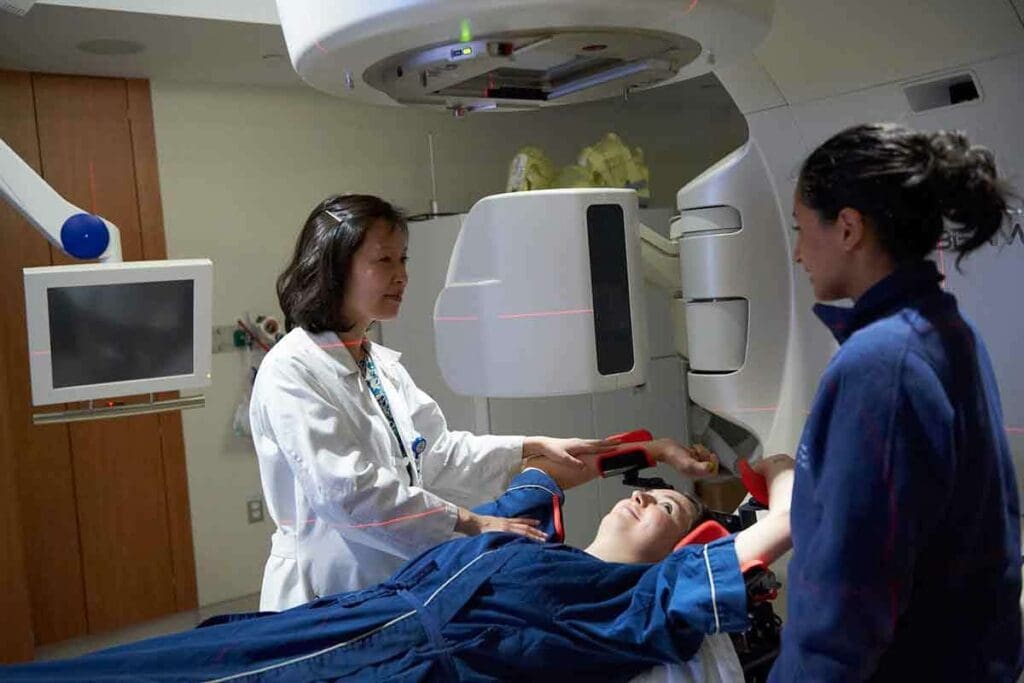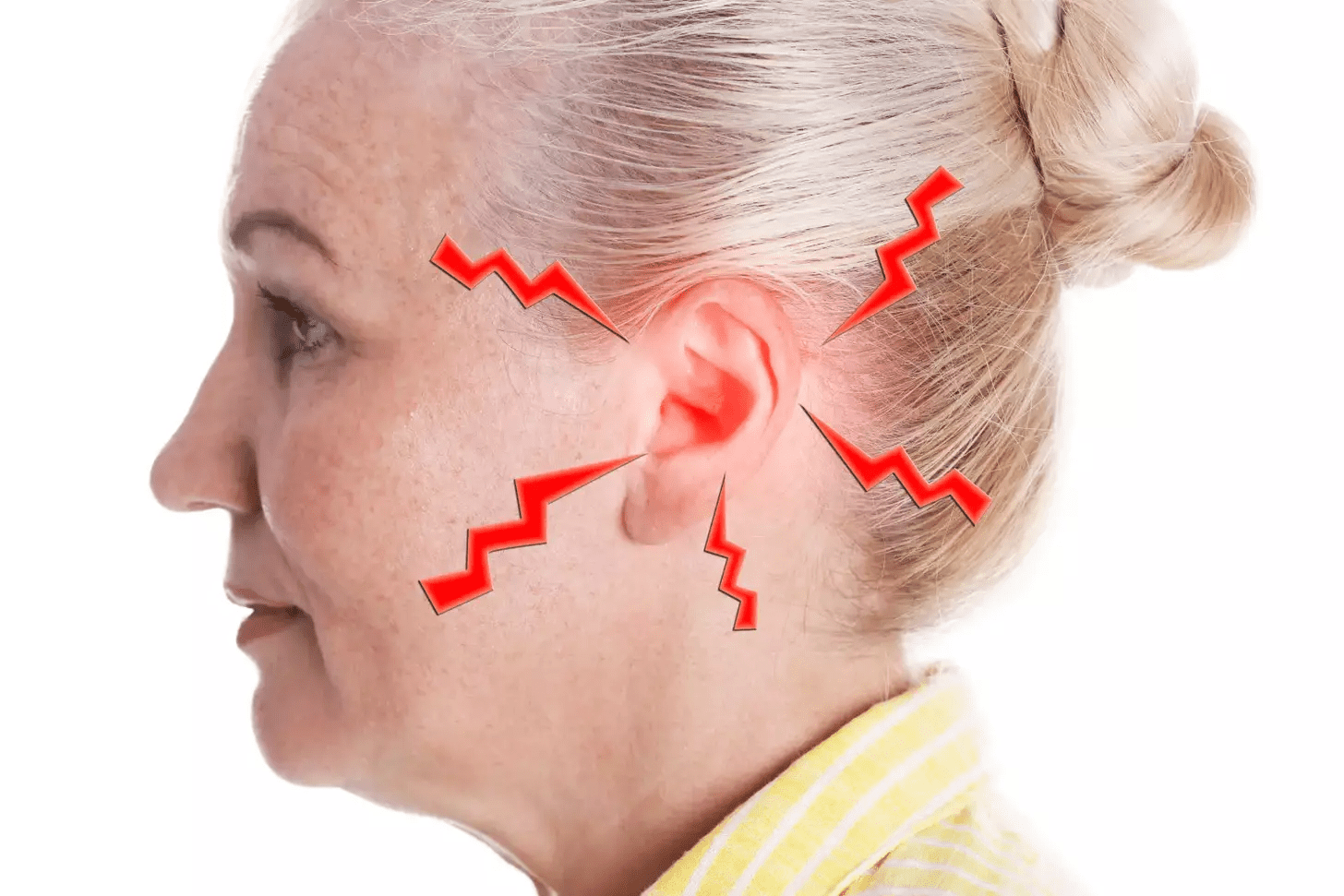Last Updated on November 27, 2025 by Bilal Hasdemir

How long is a radiation session? For those starting their cancer treatment, understanding the duration of a radiation session is key to planning and preparation. A typical radiation session can take 15 to 30 minutes, but the actual radiation time is just a few minutes. The rest is spent on setup and preparation. Most people receive radiation every day, from Monday to Friday, for 5 to 8 weeks. The exact duration depends on the cancer type and stage.
Key Takeaways
- Radiation therapy sessions typically last between 15 to 30 minutes.
- The overall treatment duration usually ranges from 5 to 8 weeks.
- Daily treatments are common, Monday through Friday.
- The type and stage of cancer influence treatment length.
- Preparation and positioning are significant parts of each session.
Understanding Radiation Therapy and Its Purpose

Radiation therapy is a common treatment for cancer. It uses high-energy particles or waves to kill cancer cells. This treatment targets a specific area of the body.
What Is Radiation Therapy?
Radiation therapy damages the DNA of cancer cells, stopping their growth or killing them. It can be used alone or with other treatments like surgery or chemotherapy. The American Cancer Society says about half of all cancer patients receive radiation therapy.
The goal of radiation therapy varies by cancer type and stage. It can aim to cure cancer, relieve symptoms, or improve quality of life.
Common Types of Cancer Treated with Radiation
Radiation therapy treats many cancers, including:
- Breast cancer
- Lung cancer
- Prostate cancer
- Head and neck cancers
- Brain tumors
A study in the Journal of Clinical Oncology says radiation therapy is versatile. It can be used for different tumors and locations. This makes it a key part of cancer care.
How Radiation Works to Treat Cancer
There are two main types of radiation therapy: external beam and internal radiation therapy (brachytherapy). External beam radiation comes from outside the body. Brachytherapy places radioactive material near the tumor.
External beam radiation therapy is the most common. It includes subtypes like intensity-modulated radiation therapy (IMRT) and stereotactic body radiation therapy (SBRT). Brachytherapy delivers high doses of radiation directly to the tumor, protecting healthy tissues.
The National Cancer Institute says radiation therapy is effective for many cancers. Research aims to make it more effective and reduce side effects.
The Duration of a Typical Radiation Session

Many patients wonder how long a typical radiation session lasts. They also want to know what affects its length. Knowing what happens during a session can make patients feel more at ease.
Actual Radiation Delivery Time
The actual time it takes to deliver radiation is very short, usually just a few minutes. This shows how advanced radiation therapy technology is. Doctors say the time for radiation delivery is between 1 to 5 minutes, depending on the treatment type.
Key factors influencing radiation delivery time include:
- The type of radiation therapy (external beam, brachytherapy, etc.)
- The dose of radiation prescribed
- The complexity of the treatment plan
Preparation and Positioning Time
While the radiation itself is quick, getting ready and positioned takes longer. This can take 10 to 20 minutes. It’s all about making sure the patient is in the right spot for accurate radiation.
“Accurate positioning is key for radiation therapy success. It makes sure the radiation hits the tumor right, without harming healthy tissues.” – A Radiation Oncologist
Total Time Spent in the Treatment Room
Adding up preparation and radiation delivery, a session can last 15 to 30 minutes. This time can change based on how complex the treatment is and the patient’s needs.
| Activity | Typical Duration |
| Preparation and Positioning | 10-20 minutes |
| Actual Radiation Delivery | 1-5 minutes |
| Total Time in Treatment Room | 15-30 minutes |
Knowing these parts can help patients feel more prepared and less anxious about their sessions.
How Long Is a Radiation Session: Breakdown by Treatment Type
The time needed for a radiation session changes with the type of therapy. Each therapy method has its own way of working, affecting how long a session lasts.
External Beam Radiation Therapy Sessions
External beam radiation therapy (EBRT) is the most common kind. It sends radiation from outside the body to the tumor. EBRT sessions are usually short, lasting 1-5 minutes. But, the total time in the treatment room is longer because of setup and getting into position.
Intensity-Modulated Radiation Therapy (IMRT) Sessions
Intensity-Modulated Radiation Therapy (IMRT) is a more advanced EBRT. It uses beams of different intensities to target tumors precisely. IMRT sessions can take longer, from 15 to 30 minutes, because of the detailed planning and delivery.
Brachytherapy Session Duration
Brachytherapy puts radioactive material close to or inside the tumor. The time for brachytherapy sessions varies a lot. Temporary brachytherapy can last from a few minutes to hours. Permanent implants don’t need repeated sessions.
Stereotactic Radiosurgery Session Length
Stereotactic radiosurgery (SRS) is very precise for small brain tumors. SRS sessions are relatively short, lasting 1 to 5 hours. But the actual radiation time is much shorter.
| Treatment Type | Typical Session Duration |
| External Beam Radiation Therapy | 1-5 minutes |
| Intensity-Modulated Radiation Therapy (IMRT) | 15-30 minutes |
| Brachytherapy (Temporary) | A few minutes to several hours |
| Stereotactic Radiosurgery | 1-5 hours |
Weekly Schedule for Radiation Treatment
The weekly radiation treatment schedule is designed to be effective and reduce side effects. Most patients get treated on a standard Monday to Friday schedule. They have treatments every day for several weeks.
Standard Monday to Friday Treatment Schedule
The usual schedule for radiation treatment is daily, from Monday to Friday. This lets patients have weekends to rest and recover. Each treatment session’s length can vary, but the total weekly treatment lasts 5 to 8 weeks. This depends on the cancer type and stage.
Reasons for Daily Treatments
Daily treatments are needed to give the full dose of radiation. Spreading the dose over several sessions helps healthy tissues recover. This method, called fractionation, makes the treatment more effective.
Weekend Breaks and Their Importance
Weekend breaks are key in the radiation treatment schedule. They let normal cells recover from radiation, which can reduce side effects. The recovery time on weekends helps keep patients healthy and well during treatment.
While the standard schedule is Monday to Friday, some treatments might vary. This depends on the patient’s needs and the cancer type.
Overall Duration of Radiation Treatment Courses
Knowing how long radiation treatment lasts is key for patients. The dose needed to kill a tumor can’t be given all at once. This is because it would harm healthy tissues nearby. So, treatment is split into many sessions to let healthy tissues heal between each one.
Short-Course Radiation (1-2 Weeks)
Short-course radiation therapy gives higher doses over a short time, usually 1-2 weeks. It’s often used for advanced cancer or to ease symptoms. Short-course radiation helps manage pain, bleeding, and other cancer symptoms.
Standard Treatment Courses (5-7 Weeks)
The usual time for radiation treatment is 5-7 weeks. Treatments are given once a day, from Monday to Friday. This standard treatment course helps deliver a high dose of radiation safely. The exact time depends on the cancer type, stage, and treatment goals.
Extended Treatment Protocols (8+ Weeks)
Sometimes, treatment goes longer than 7 weeks. This happens when it’s combined with other treatments like chemotherapy. Extended treatment protocols need careful planning to keep treatment effective and manage side effects.
Hypofractionated vs. Conventional Fractionation
Radiation therapy can be given in different ways. Conventional fractionation means a standard dose daily, 5 days a week. Hypofractionation uses higher doses less often. Hypofractionated therapy is gaining popularity for some cancers, as it’s more convenient and may offer better results.
Factors That Affect Radiation Treatment Duration
Many things can change how long radiation treatment lasts. This includes the cancer’s type and the patient’s health. Knowing these can help patients get ready for their treatment.
Cancer Type and Stage
The cancer’s type and stage are key in figuring out how long treatment will take. Each cancer reacts differently to radiation. The cancer’s stage also affects how intense and long the treatment will be.
- Cancer Type: Some cancers, like lymphomas, might need less time in treatment.
- Cancer Stage: Early cancers might get treated faster. But cancers that are more advanced could need longer, more detailed plans.
Treatment Intent: Curative vs. Palliative
The reason for radiation therapy changes how long it lasts. It can be to cure the cancer or to ease symptoms.
- Curative Treatment: This usually takes longer to make sure the cancer is gone.
- Palliative Treatment: This is shorter, aiming to make symptoms better and improve life quality.
Patient-Specific Considerations
Things about the patient also play a part in treatment length. This includes their health, age, and how well they handle treatment.
- Overall Health: Some health issues might mean treatment needs to be adjusted.
- Age: Older patients might need more time to rest between treatments.
Concurrent Therapies
Using other treatments like chemotherapy or surgery with radiation can change how long treatment lasts.
- Chemotherapy: Adding chemotherapy to radiation can make treatment longer and more complex.
- Surgery: Radiation before or after surgery can also affect treatment length and plan.
Understanding these factors helps patients get ready for their radiation treatment. It lets them know what to expect during their therapy.
What to Expect During Each Radiation Session
Knowing what to expect during radiation therapy can help reduce anxiety. Before treatment starts, several steps are taken. These steps ensure the therapy is accurate and effective.
Pre-Session Preparation
You’ll have a simulation or planning scan before treatment. This is key for mapping the treatment area. It also ensures the treatment machine is in the right spot.
- The simulation session may involve a CT scanner or other imaging technology.
- A radiation therapist will mark the treatment area on your skin with small tattoos or marks.
- You may be given immobilization devices to help maintain the correct position during treatment.
The Treatment Process
The actual radiation session is straightforward and painless. The radiation therapist will place you on the treatment table. They make sure you’re comfortable and in the right position.
| Step | Description | Duration |
| Positioning | The radiation therapist positions you on the treatment table. | 5-10 minutes |
| Beam Delivery | The actual delivery of radiation beams. | 2-5 minutes |
| Total Session Time | The entire time spent in the treatment room. | 15-30 minutes |
Post-Session Procedures
After the session, you’ll be watched for a short time. This is to check for any immediate side effects. The radiation therapist will give you instructions on caring for the treated area.
It’s important to follow these instructions carefully to avoid complications. You might also have follow-up appointments. These are to check your progress and adjust the treatment plan if needed.
In conclusion, knowing what to expect during radiation therapy can make it less scary. Understanding the preparation, treatment, and after-care can help patients feel more in control of their journey.
How Long Does It Take for Radiation to Work
Many patients ask how long it takes for radiation therapy to work. The time frame depends on several things. These include the type of cancer, the disease’s stage, and the patient’s health.
Radiation therapy doesn’t kill cancer cells right away. It takes time for the radiation to damage the DNA of cancer cells. This damage stops them from dividing and eventually kills them. This process can take weeks to months, and the treatment’s success is closely watched.
Immediate vs. Delayed Effects
Radiation therapy has both immediate and delayed effects. Immediate effects happen during or right after treatment. These can include fatigue, skin irritation, or nausea. Delayed effects, on the other hand, can appear weeks, months, or even years later. They are related to the long-term results of the treatment.
It’s important to understand these differences. This helps manage patient expectations and improve their quality of life during and after treatment.
Timeline for Symptom Relief
Patients often worry about when they’ll feel better from radiation therapy. The time it takes for symptoms to improve varies a lot. For some, relief comes soon after treatment ends. For others, it may take weeks or months.
Several things can affect how long it takes for symptoms to improve. These include the type and stage of cancer, the radiation dose and type, and the patient’s health.
Monitoring Treatment Effectiveness
Keeping track of how well radiation therapy is working is a key part of treatment. This involves regular check-ups, imaging tests, and other assessments. Healthcare providers use these to see how well the treatment is doing and make any needed changes.
- Regular follow-up appointments
- Imaging tests (e.g., MRI, CT scans)
- Assessment of symptom changes
By closely watching how well the treatment is working, healthcare providers can adjust it to fit the patient’s needs. This helps get the best results and reduce side effects.
Managing Your Time During Radiation Treatment
Managing your time well during radiation treatment is key. Treatments are usually once a day, Monday to Friday, for weeks. Planning is a must.
Planning Your Daily Schedule
Creating a daily schedule helps you stay organized. It ensures you arrive on time for your therapy sessions. Try to keep your treatment day as stress-free as possible.
Here’s a simple way to plan your day:
- Allow extra time to travel to the treatment center.
- Schedule rest periods before and after treatment.
- Plan for meals and hydration.
- Consider having a friend or family member accompany you for support.
Transportation Considerations
Getting to and from radiation therapy is important. You might need to think about different ways to get there. This depends on where your treatment is and how you feel.
| Transportation Option | Considerations |
| Driving Yourself | Assess your energy levels and the distance to the treatment center. |
| Public Transportation | Check schedules and plan for possible delays. |
| Ride-Sharing Services | Book in advance to ensure availability. |
| Friends/Family | Coordinate schedules and appreciate their support. |
Work and Life Balance During Treatment
Keeping a balance between treatment and daily life is important. It’s okay to adjust your expectations and prioritize your health during this time.
Talk to your employer about flexible work arrangements. This could mean working from home or adjusting your hours. It helps you manage your energy and responsibilities.
By planning your day, thinking about how to get there, and balancing work and life, you can handle radiation treatment better. Remember, your health is the most important thing during this time.
Advanced Radiation Technologies and Their Impact on Treatment Time
New radiation technologies have changed cancer treatment for the better. They offer better results and shorter treatment times. These technologies make radiation therapy more precise and effective.
These new technologies have cut down on treatment time and how often it’s needed. For example, MRI-guided radiation therapy can adjust treatment on the fly. This makes it more precise and might cut down on the number of sessions needed.
Image-Guided Radiation Therapy
Image-guided radiation therapy (IGRT) uses imaging to guide radiation. This method targets tumors more accurately. It also reduces harm to healthy tissues nearby.
IGRT offers several benefits, including:
- Improved accuracy in targeting tumors
- Reduced risk of side effects
- Potential for shorter treatment courses
Proton Therapy Sessions
Proton therapy uses protons to kill cancer cells, unlike X-rays. It’s great for tumors near important structures.
| Therapy Type | Treatment Duration | Precision Level |
| Proton Therapy | Shorter sessions | High |
| Conventional Radiation | Standard sessions | Moderate |
| Image-Guided Radiation | Variable | High |
MRI-Guided Radiation Treatment
MRI-guided radiation therapy combines MRI with radiation. It allows for real-time adjustments based on the tumor’s position and shape.
The benefits of MRI-guided radiation include:
- Enhanced precision in targeting tumors
- Ability to adjust treatment in real-time
- Potential reduction in treatment sessions
In conclusion, advanced radiation technologies are making a big difference in treatment time and effectiveness. They offer more precise and efficient ways to treat cancer, leading to better patient outcomes.
Conclusion: What to Remember About Radiation Treatment Duration
It’s important for patients to understand how long radiation treatment will last. The time needed for treatment varies a lot. This depends on the type of cancer, the treatment’s goal, and the patient’s health.
The time in treatment can be short or long, from days to weeks. The type of radiation therapy used affects the duration. The cancer’s stage and if other treatments are needed also influence the treatment length.
Knowing these details helps patients plan better. It lets them manage their time and know what to expect. This knowledge can reduce stress and help them stick to their treatment plan.
FAQ
How long is a typical radiation therapy session?
A typical session can last from 15 to 60 minutes. The actual radiation time is usually just a few minutes.
How long does radiation treatment take to complete?
The treatment time varies. It depends on the cancer type, stage, and treatment goals. It can last from a few days to several weeks or months.
What is the difference between hypofractionated and conventional fractionation in radiation therapy?
Hypofractionated therapy gives higher doses in fewer sessions. It’s shorter. Conventional therapy uses smaller doses over more sessions. It’s longer.
How often are radiation therapy sessions scheduled?
They are usually daily, Monday to Friday. There are breaks on weekends. The exact schedule depends on the treatment plan.
How long does it take for radiation to take effect?
It varies. Some see relief in weeks. Others take months to feel the full effects.
What factors influence the duration of radiation treatment?
Many things affect treatment time. These include the cancer type, stage, and treatment goals. Patient health and other therapies also play a role.
How long are radiation therapy sessions for external beam radiation therapy?
External beam sessions are shorter. They last 15-30 minutes. The actual radiation time is just a few minutes.
How long does brachytherapy treatment last?
Brachytherapy time varies. Some treatments are done in one session. Others may need multiple sessions or longer radioactive material placement.
What is the typical duration of stereotactic radiosurgery?
Stereotactic radiosurgery is usually done in one session. It can last from 30 minutes to several hours. It depends on the treatment’s complexity.
How does image-guided radiation therapy impact treatment time?
Image-guided therapy can make treatments shorter. It allows for more precise targeting. But, it may add time for imaging and verification.
Can radiation treatment be completed in a shorter time frame with advanced technologies?
Yes, advanced technologies like proton therapy can make treatments shorter. MRI-guided treatment can also be more efficient. But the exact impact depends on the case.
References
- Chaput, G., Bernstein, A., & Lo, S. (2021). Radiotherapy: Clinical pearls for primary care. PMC. https://pmc.ncbi.nlm.nih.gov/articles/PMC8516179/
- Vieira, B., Demirtas, D., van de Kamer, J., Hans, E. W., & van Harten, W. (2020). Radiotherapy treatment scheduling considering time constraints. Radiation Oncology. https://pmc.ncbi.nlm.nih.gov/articles/PMC7676074/






